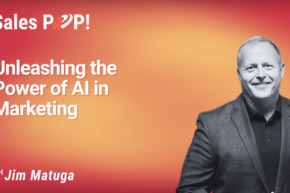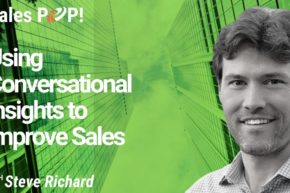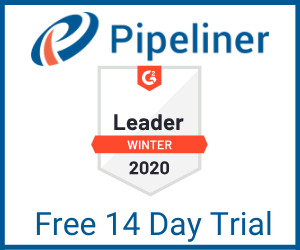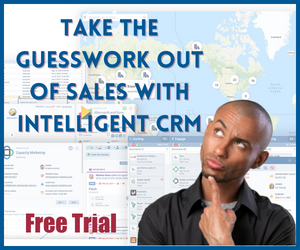Monetizing the value of a SaaS product is one of the most critical—and nuanced—challenges for founders and revenue leaders. In a recent episode, host John Golden sat down with Bill Wilson, founder and CEO of Pace Pricing, to unpack the art and science of SaaS pricing. Bill, a three-time founder and seasoned pricing consultant, shared actionable insights on how to move beyond “just picking a number” and instead build a pricing strategy that truly reflects the value your product delivers.
In this comprehensive guide, we’ll break down the main themes and expert advice from the episode, offering in-depth, actionable tips for SaaS leaders who want to capture more value, avoid common pitfalls, and build lasting customer trust.
Rethink Pricing: It’s About Value, Not Just Numbers
Key Insight:
Pricing is not just a number—it’s a reflection of the value your product delivers to customers.
Actionable Advice:
- Tie pricing to customer outcomes:
Instead of thinking, “What can we charge?” ask, “How does our product help customers achieve their goals?” Price according to the progress or results your product enables. - Focus on value creation and value capture:
Your job is to create value for customers and then capture a fair share of that value through pricing and packaging.
Expert Tip:
Bill Wilson emphasizes that the best pricing strategies are rooted in a deep understanding of how your product fits into the customer’s workflow and the tangible benefits it provides.
Avoid the Competitor Copycat Trap
Key Insight:
Copying competitors’ pricing is a common but dangerous shortcut.
Actionable Advice:
- Don’t assume competitors have it right:
Their pricing may not reflect their actual value, costs, or strategy. - Avoid the “race to the bottom”:
Undercutting competitors can erode your margins and devalue your product.
Expert Tip:
Use competitor pricing as a reference, not a template. Your unique value proposition should drive your pricing decisions.
Choose the Right Value Metric
Key Insight:
The value metric is the unit by which you charge (e.g., per user, per transaction, per GB). It should align with how customers derive value.
Actionable Advice:
- Identify what customers care about:
Is it the number of users, the volume of data, or the number of transactions? - Align pricing with usage and outcomes:
The closer your value metric matches customer value, the easier it is to justify price increases and expansions.
Expert Tip:
Bill notes that the wrong value metric can create friction, limit expansion, or even drive churn. Test and validate your metric with real customers.
Use Competitor Pricing as a Baseline—Not a Rule
Key Insight:
Competitor pricing can inform your strategy, but it shouldn’t dictate it.
Actionable Advice:
- Method 1: Quantitative Comparison
- Identify the “next best alternative” in the market.
- Quantify how your product is better or worse on key value drivers (e.g., time saved, cost reduced).
- Adjust your price accordingly based on these differences.
- Method 2: Qualitative Assessment
- Rank your product and competitors on a simple scale (e.g., 1-5) across value factors.
- Use this to establish a pricing range that reflects your strengths and weaknesses.
Expert Tip:
Be honest in your assessment—overestimating or underestimating your value can both be costly mistakes.
Be Brutally Honest About Your Product’s Value
Key Insight:
Self-deception is a major risk. Teams often overrate or underrate their product’s value.
Actionable Advice:
- Conduct internal “value audits”:
Regularly review your product’s strengths and weaknesses with brutal honesty. - Seek outside perspectives:
Bring in advisors, consultants, or even friendly customers to challenge your assumptions.
Expert Tip:
Bill warns that overconfidence can lead to overpricing and lost deals, while underconfidence can result in missed opportunities and lost revenue.
Engage Early Customers for Real-World Insights
Key Insight:
Early adopters often use your product in unexpected ways, revealing hidden value.
Actionable Advice:
- Interview early users:
Ask how they use the product, what they value most, and what alternatives they considered. - Look for “aha” moments:
Sometimes, the feature you thought was secondary is actually the main driver of value.
Expert Tip:
Bill shares how customer feedback led him to reposition a quoting tool, focusing on demo presentation rather than just deal speed—unlocking new value and a successful exit.
Iterate Pricing Thoughtfully—Not Haphazardly
Key Insight:
Pricing is not “set and forget,” but frequent, unpredictable changes can erode trust.
Actionable Advice:
- Early-stage: Experiment more frequently (e.g., quarterly), but communicate clearly.
- Growth-stage: Adjust smaller elements every 6 months; major changes every few years.
- Always explain the “why” behind changes to customers.
Expert Tip:
Bill cautions against rapid, unexplained price changes, citing backlash faced by companies like Cursor and Canva.
Discounting: Policies, Pitfalls, and Best Practices
Key Insight:
Discounting is inevitable, but unmanaged discounting can destroy value and create chaos.
Actionable Advice:
- Establish clear discounting policies:
Create a “deal desk” for sales teams larger than one. - Prioritize discounts on:
- Implementation fees
- Platform fees
- Add-ons
- Avoid discounting core value metrics (e.g., per-user or per-usage fees).
- Volume discounts:
Offer only when justified by true economies of scale.
Expert Tip:
Strategic, disciplined discounting protects your brand and margins.
Integrate Pricing with Product and Positioning
Key Insight:
Pricing, product, and positioning are inseparable. Pricing should be considered early in product development.
Actionable Advice:
- For every new feature, ask:
- Will this drive retention, expansion, or acquisition?
- Should it be monetized now, or offered free to increase stickiness?
- Align pricing with your brand promise and market position.
Expert Tip:
Sometimes, giving away a feature for free can drive more long-term value than charging for it immediately.
Build Trust Through Transparent Communication
Key Insight:
Trust is your most valuable asset. Price changes, if mishandled, can destroy it overnight.
Actionable Advice:
- Communicate early and often:
- Explain what’s changing, why, and how it benefits the customer.
- Be transparent about your costs and value creation.
- Offer transition plans or grandfathering for existing customers when possible.
Expert Tip:
Bill shares that customers will accept price increases if they trust you and see ongoing value. Broken trust, however, can override even high switching costs.
Defend Your Market Position—Don’t Get Stuck in the Middle
Key Insight:
The “middle” is the hardest place to defend. Be clear: are you a premium or a budget option?
Actionable Advice:
- Choose a clear market position:
- Premium: Focus on differentiated value, service, and innovation.
- Budget: Focus on simplicity, efficiency, and cost savings.
- Avoid the “feature war” in the middle:
Competing on features alone is unsustainable.
Expert Tip:
Bill uses the car market analogy: customers are loyal to Mercedes or Hyundai, but not to brands stuck in the middle.
Our Host
John is the Amazon bestselling author of Winning the Battle for Sales: Lessons on Closing Every Deal from the World’s Greatest Military Victories and Social Upheaval: How to Win at Social Selling. A globally acknowledged Sales & Marketing thought leader, speaker, and strategist, he has conducted over 1500 video interviews of thought leaders for Sales POP! online sales magazine & YouTube Channel and for audio podcast channels where Sales POP! is rated in the top 2% of most popular shows out of 3,320,580 podcasts globally, ranked by Listen Score. He is CSMO at Pipeliner CRM. In his spare time, John is an avid Martial Artist.








Comments